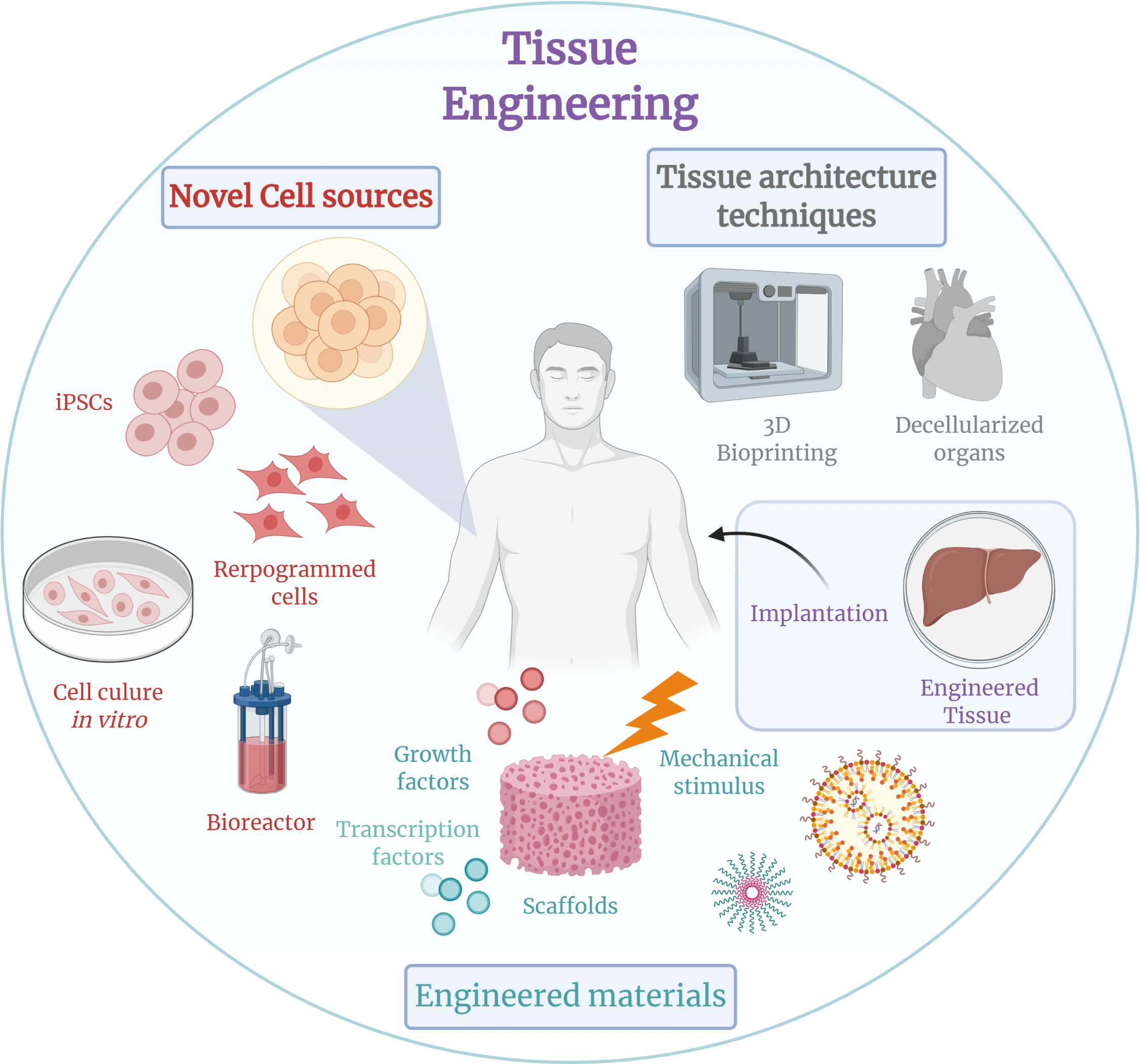
Introducere
In the realm of longevity medicine, Intersecția celulelor stem și a schelelor revoluționează domeniul creșterii și transplantului de organe. Capacitatea de a valorifica puterea regenerativă a celulelor stem combinate cu precizia schelelor oferă o cale promițătoare către extinderea duratei de viață a omului prin crearea de noi organe. This article delves into the innovative techniques, aplicații, and implications of using stem cells and scaffolds for organ growth, with a focus on autologous transplantation and its potential to shape the future of life extension.

Understanding Stem Cells and Scaffolds
Stem cells are undifferentiated cells with the remarkable ability to differentiate into various cell types within the body. These cells have the potential to regenerate damaged tissues and organs, making them a critical component in regenerative medicine. On the other hand, scaffolds are structures that provide a framework for cells to grow and organize into functional tissues or organs. By combining stem cells with scaffolds, researchers can create a conducive environment for organ growth and development.

The Role of Stem Cells in Organ Regeneration
Stem cells can be sourced from various locations in the body, inclusiv măduva osoasă, țesut adipos, and even embryonic sources. These cells possess the capacity to differentiate into specific cell types based on the signals they receive from their microenvironment. In the context of organ regeneration, stem cells can be directed to differentiate into the desired cell types needed to repair or replace damaged tissues.

The Importance of Scaffolds in Organ Engineering
Scaffolds play a crucial role in providing structural support and guiding the growth of cells into functional tissues. These structures can be made from a variety of materials, such as synthetic polymers, natural biomaterials, or decellularized extracellular matrix. The choice of scaffold material influences cell attachment, proliferation, și diferențiere, ultimately determining the success of organ engineering processes.

Applications of Stem Cells and Scaffolds in Organ Growth
The synergy between stem cells and scaffolds has opened up new possibilities for growing organs in the laboratory setting. Researchers are exploring various techniques to engineer complex tissues and organs, including heart, ficat, rinichi, and pancreas, using these innovative approaches.
Heart Regeneration with Stem Cells and Scaffolds
Heart disease remains a leading cause of mortality worldwide, highlighting the urgent need for effective treatment strategies. By utilizing stem cells and scaffolds, researchers are investigating ways to regenerate damaged cardiac tissue and restore heart function. Techniques such as seeding cardiac stem cells onto scaffold structures show promise in fostering tissue repair and regeneration.
Liver Tissue Engineering for Regenerative Medicine
The liver plays a vital role in metabolic functions and detoxification within the body. In cases of liver disease or failure, transplantation is often the only viable treatment option. Cu toate acestea, the shortage of donor organs underscores the importance of developing alternative approaches. Stem cell-based therapies combined with scaffold technologies offer a potential solution for growing functional liver tissue in vitro for transplantation.
Kidney and Pancreas Reconstruction Using Regenerative Techniques
Chronic kidney disease and diabetes are prevalent conditions that can lead to kidney and pancreas dysfunction, respectively. Stem cell-based therapies, coupled with advanced scaffold designs, hold promise for regenerating kidney and pancreatic tissues. By mimicking the structural and functional properties of these organs, researchers aim to create personalized solutions for patients in need of organ replacement.
Transplant autolog: A Personalized Approach to Organ Regeneration
Autologous transplantation involves using a patient’s own cells to regenerate tissues or organs, minimizing the risk of rejection and improving treatment outcomes. This personalized approach leverages the regenerative potential of stem cells harvested from the individual, combined with customized scaffold designs tailored to specific patient needs.
Advantages of Autologous Transplantation in Longevity Medicine
– Reduced risk of immune rejection: Using the patient’s own cells decreases the likelihood of rejection reactions post-transplantation.
- Personalized treatment plans: Tailoring the scaffold design and stem cell source to each individual enhances treatment efficacy and outcomes.
- Long-term organ function: By regenerating organs from the patient’s cells, the potential for long-lasting organ function and improved quality of life increases.
- Cost and accessibility: Making advanced organ regeneration technologies accessible to a broader population remains a challenge due to cost constraints and limited availability.
- Research and innovation: Continued research into optimizing stem cell differentiation, scaffold design, and tissue engineering techniques is essential for further advancing longevity medicine.
The Future of Organ Growth and Life Extension
As biotechnology clinics and research institutions continue to advance the field of organ engineering, the prospects for life extension through stem cells and scaffolds are becoming increasingly tangible. The ability to grow personalized organs for transplantation holds immense potential for enhancing human longevity and quality of life.
Challenges and Opportunities in Longevity Medicine
– Regulatory considerations: Ensuring the safety and efficacy of stem cell-based therapies requires rigorous regulatory oversight and ethical guidelines.
Concluzie
În concluzie, the convergence of stem cells and scaffolds represents a groundbreaking approach to growing organs for life extension. Through the synergy of regenerative medicine techniques, personalized organ regeneration is no longer a distant possibility but a promising reality. As the field of longevity medicine continues to evolve, the integration of stem cells and scaffolds offers new avenues for extending human lifespan and enhancing overall well-being.
Explore how scaffolds and stem cells are shaping longevity medicine and discover the transformative potential of organ growth for life extension.
—
By crafting this comprehensive article on the topic of “Celule stem și schele: Organele în creștere pentru extinderea vieții,” we have provided valuable insights for medical professionals, wealthy clients, and longevity enthusiasts seeking to understand the innovative applications of regenerative medicine in organ engineering. This expertly crafted content combines authoritative information with a compelling narrative, catering to a diverse audience interested in cutting-edge advancements in the field of longevity medicine.
